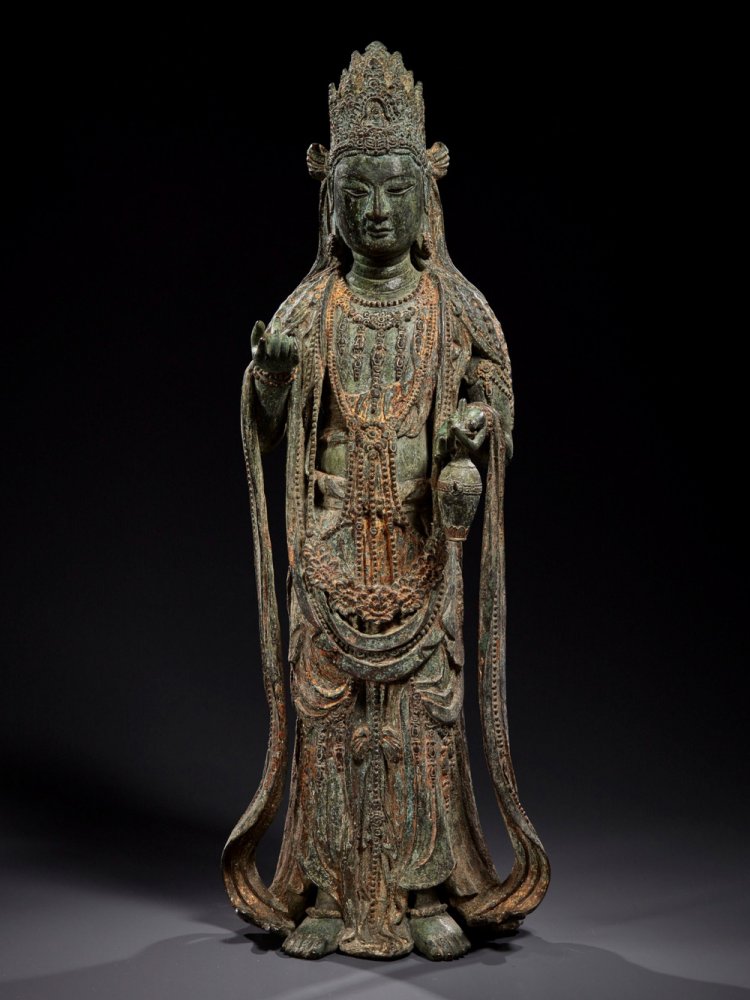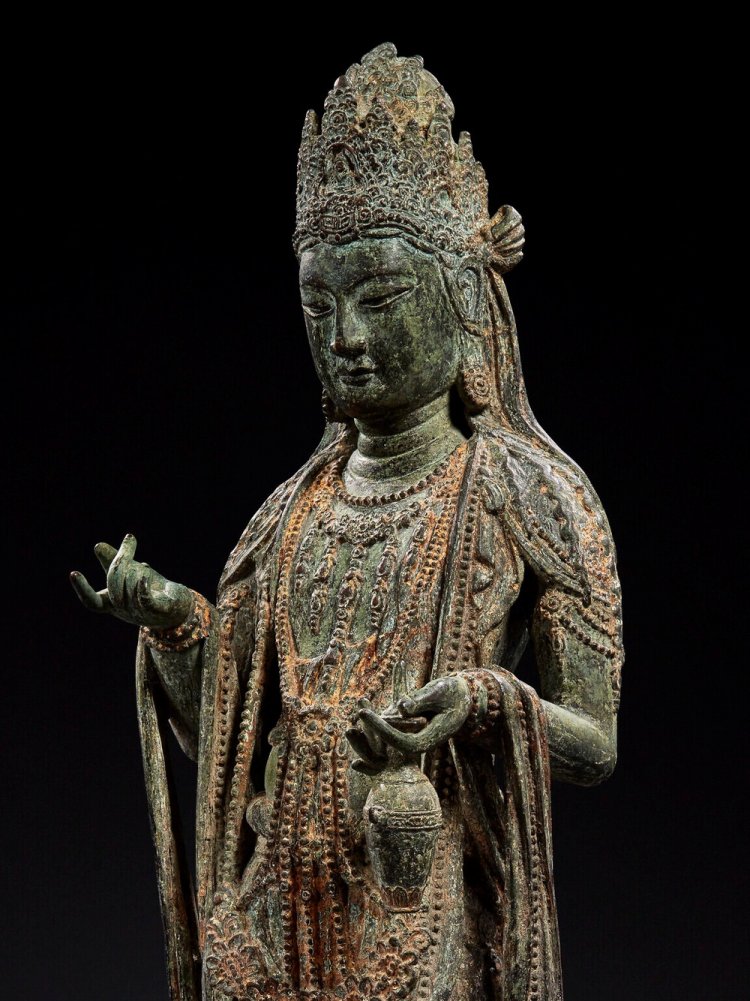A gilded bronze Bodhisattva sculpture dating from the Dali period will go on display at Christie’s New York auction house next week. With a special “profile”, it is estimated that this Bodhisattva statue will fetch a price of between 2 and 3 million USD and will top the auctions at Asia Week New York, according to The Value.

This million-dollar Bodhisattva statue is 57.1 cm high. Used to be owned by many owners in different countries, including the United States. This statue is classified as Important Chinese Ceramics and Works of Art.

The successful auction price for this thousand-year-old Bodhisattva statue was 2-3 million USD.
There are many different incarnations of Bodhisattva Avalokiteshvara – the Great Compassionate One – who delayed his attainment of Buddhahood in order to help sentient beings achieve enlightenment. People can appear with many details, this statue depicts Bodhisattva with willow branches.
The image of willow branches is also sometimes called Bhaisajyaraja Avalokitesvara – a Sanskrit name meaning King of Medicine – referring to the healing powers of willow branches.
The idiosyncratic characteristics of the Dali Kingdom abound – such as a square face with a small chin; small almond-shaped eyes looking straight ahead, crowned with elaborate crowns and jewels.
These features can be found in gilded bronzes depicting Bodhisattvas in China from the 10th to 13th centuries. They are found in museum collections around the world such as the Metropolitan Museum of Art, New York; Staatliche Museen zu Berlin, Asian Art Museum; National Palace Museum, Taipei; Tsz Shan Monastery Museum of Buddhist Art, Hong Kong and Shanghai Museum.

This work will be called at next week’s auction the Gilt Bronze Bodhisattva Statue, Dali Kingdom period.
According to a Christie’s expert, the sculpture being auctioned this time will be displayed with a halo or mandorla (almond-shaped statue frame) as if worshiped in a temple.
This sculpture and related works in this group lack an important detail on the back of the head or between the shoulder blades that would secure a mandorla. This shows that a mounted sculpted mandorla has been lost. Or there is another timing reason.
According to soha





